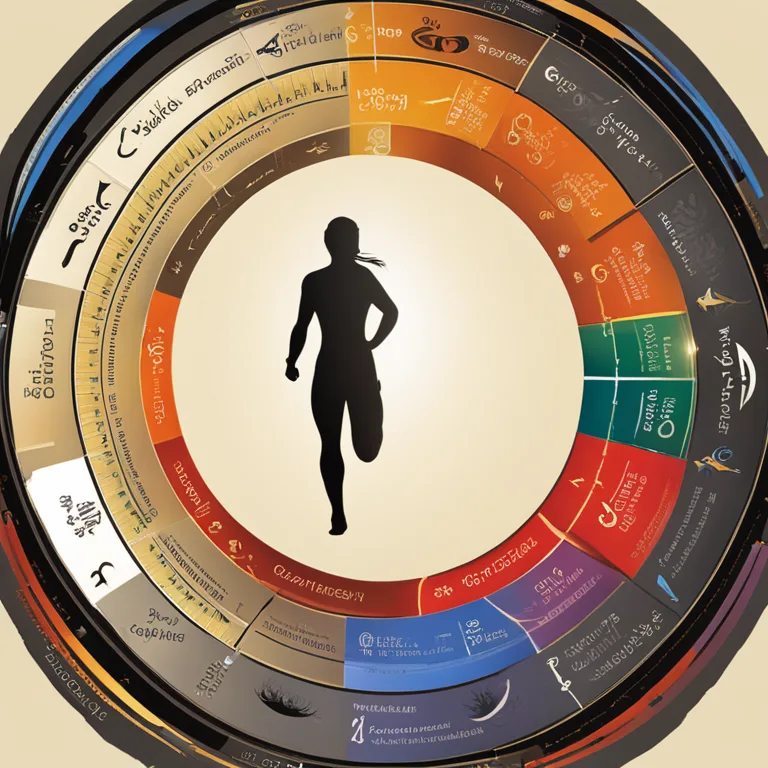
Mastering Biorhythm Chart Interpretations
Learn how to read a biorhythm chart effectively, understanding the rhythms and cycles of your physical, emotional, and intellectual well-being.
article by Adrian Wallace
Introduction to Biorhythms
Biorhythms are a complex but intriguing concept believed to forecast the cycling energies within our bodies. The theory posits that from the moment of birth, we embark on three primary cycles: physical, emotional, and intellectual. Each has its unique period: the physical is 23 days, the emotional is 28 days, and the intellectual is 33 days. These cycles are thought to influence our capabilities and emotions. By plotting these rhythms on a chart, it is claimed that one can predict with some degree of accuracy the flow of their biological patterns.

The Core Components
Central to interpreting a biorhythm chart are the cycles themselves. The physical cycle governs our vitality and endurance, the emotional cycle monitors our mood and feelings, and the intellectual cycle affects our thinking and analytical capabilities. Each cycle oscillates between high (positive phase), low (negative phase), and critical (transition phase) periods, which purportedly affect our effectiveness and moods in each of these areas.

Reading the Chart
A biorhythm chart uses a sine wave graph to illustrate these cycles, starting with our birth date as the baseline. Days are typically placed along the horizontal axis, with the percentage of the biorhythm cycle plotted along the vertical axis. When a line crosses the mid-point, it signifies a transition from positive to negative or vice versa. It's at this critical point, as lines cross the zero axes, where one is thought to be more susceptible to making mistakes or having accidents, due to the change in the cycle phase.

Interpreting the Highs and Lows
When a biorhythm line is above the midline, it is considered a positive phase, potentially indicating a time of strength in that area. Conversely, a line below the middle indicates a negative phase, potentially signaling a time for caution or rest. For example, if one's physical line is high, it might be a good day for physical activities, while a low emotional line could suggest it's a day for self-care rather than socializing.

Analysing Cycle Intersections
Intersections of the cycles are incredibly important and can point to significant days. For instance, if two or more cycles cross into a positive phase simultaneously, it may denote a period of exceptional harmony and potential. Conversely, multiple cycles dipping into their negative phases at the same time might suggest particularly challenging days ahead.
Using Biorhythms Practically
Understanding your biorhythm chart may offer insights into planning your activities. It's utilized by some to decide when to schedule interviews, exams, or competitions, believing that aligning such events with positive cycles can yield better results. While there's no scientific proof that biorhythms can predict or influence events, many people enjoy using them as a tool for personal reflection and planning.
Modern Biorhythm Applications
Nowadays, computer programs and mobile apps can calculate and display your biorhythm chart with ease. These platforms often offer enhanced features like future cycle projections and combined cycle analyses, making it a more accessible practice for personal use. As the fascination with bio-harmony and personal cycles continues into 2024 and beyond, technology will likely play a more significant role in how we interact with and interpret our biorhythms.
Published: 12/28/2023
Modified: 12/28/2023
More predictions
Come back here soon to learn more about yourself and your future


Navigating Biorhythm Cycles
Explore the concept of biorhythms, their cycles, and examples of how they influence our daily lives.


Biorhythms In Humans Explored
Exploring the concept of biorhythms and their influence on human behavior and physical states.


Biorhythm Theory: Fact Or Fallacy?
Explore the fascinating concept of biorhythms to discern if there's any scientific accuracy behind this popular belief.